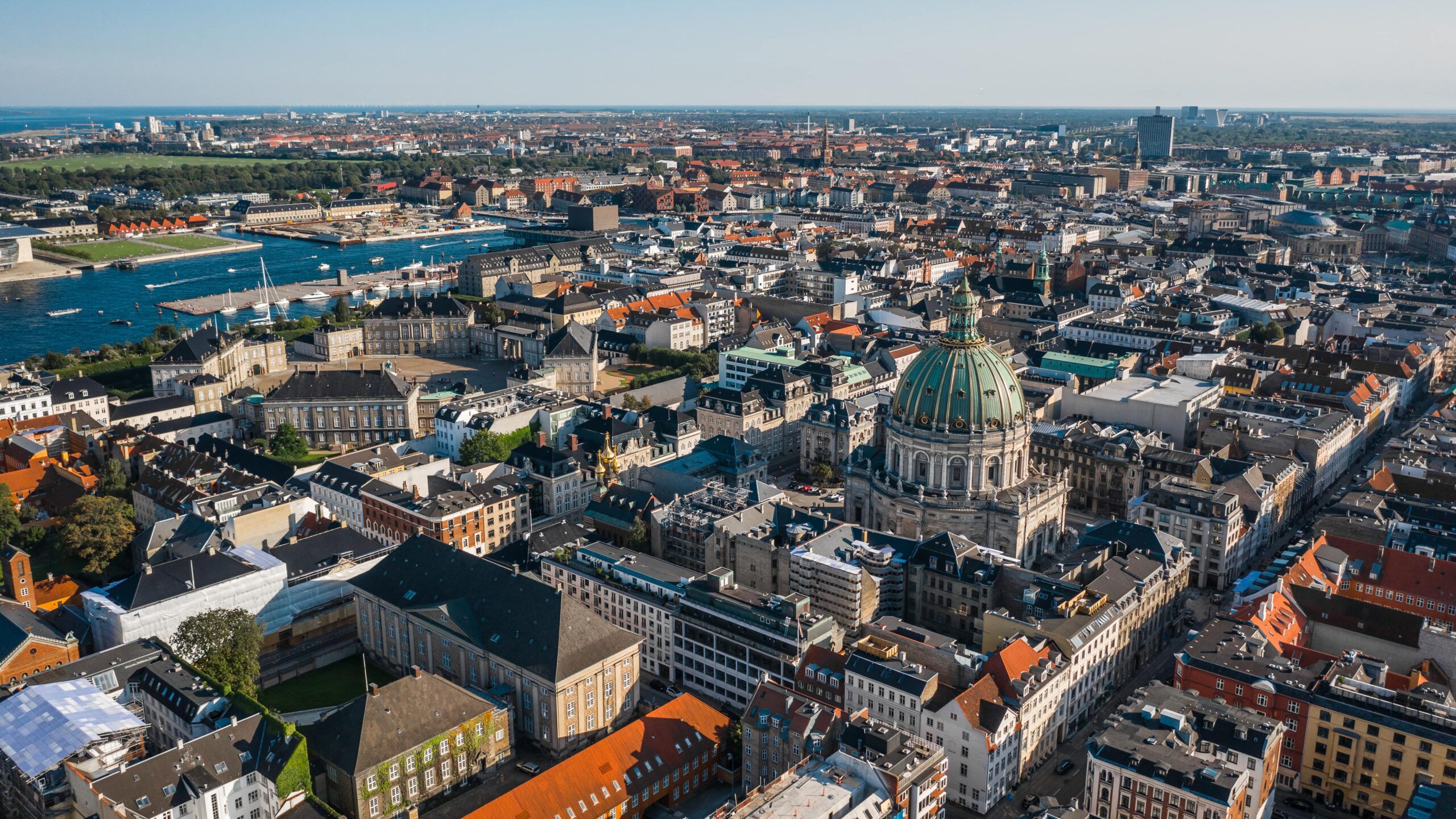We all know that urban planning is a key player in crafting sustainable, vibrant cities that truly serve their residents’ needs. With the world changing at breakneck speed, efficient urban planning is more important than ever. Enter geographic information system (GIS), a real game-changer in urban planning.
What is GIS?
GIS a fantastic software that mashes up geographic info, spatial data, and other related details to create comprehensive maps, such as land use maps and land suitability maps.
GIS gives urban planners the tools to sift through, manipulate, and make sense of data in ways previously unthinkable.
This urban planning GIS opens up a world of smart decisions, better resource inventory management, and designing cities that are not only functional but pleasing to the eye.
Why GIS is the superhero of urban planning
A few major reasons why GIS is the go-to tool in urban planning:
1. Simplifying data
GIS, one of the key GIS tools, lets urban planners turn complex spatial distribution data into easy-to-grasp visuals.
Overlaying existing land development data layers, like population numbers, existing infrastructure, and environmental factors, helps planners spot patterns and make data-driven decisions.
For example, they could analyze traffic patterns to pinpoint the best locations for roads and public transport systems.
2. Spatial analysis and modeling
GIS equips urban planners with the capability to conduct spatial analysis, which is studying the relationship between different geographic features.
This can help identify areas at risk from natural disasters, gauge the impact of urban development projects, or find the ideal locations for parks and green spaces.
3. Exploring future scenarios
GIS enables urban planners to experiment with different scenarios, such as changes in land use or limiting urban sprawl, and evaluate their potential impact using spatial modeling.
They can simulate how population growth might strain transportation infrastructure, or how zoning law changes could affect housing affordability.
This lets urban planners make smarter decisions and sidestep potential issues before they become problems.
4. Community involvement
GIS can also be used to bring stakeholders into the urban development process. Interactive maps and visualizations help planners communicate their ideas effectively and gather public feedback, ensuring the urban environment meets the community’s needs and wants.
GIS in the world of urban planning
Cities worldwide are already leveraging GIS platforms in their urban planning accounts:
1. Barcelona, Spain
Barcelona uses GIS to manage its urban tree canopy. By analyzing satellite images and other data, the city can spot areas with low tree cover and devise strategies to increase green spaces, helping combat climate change.
You can tell by the way Barcelona is adding more green spaces in the city that they’re using GIS. They use satellite images and other info to find areas that need more trees. They then make plans to add more greenery to these areas. The proof is in the pudding – just look at the increase in green spaces. Reports or statements from the city’s leaders can confirm they’re using GIS.
2. Portland, Oregon, USA
Portland relies on GIS to create a comprehensive bike network. By studying traffic flow and terrain, the city has established a well-linked, safe network of bike lanes and paths, encouraging more people to cycle and reducing car dependency.
You can tell Portland uses GIS because of their bike routes. They used GIS to look at traffic and the lay of the land, and made a network of safe bike paths that encourage people to cycle instead of using cars. Again, the city’s reports or statements from officials can confirm they used GIS.
3. Medellín, Colombia
Medellín uses GIS to prioritize infrastructure investments in neighborhoods that need it most. The city analyzes data on access to education, healthcare, and public transport to distribute resources more fairly, improving life quality for its residents.
Medellín is focusing on improving neighborhoods that need it most, which shows they’re using GIS. They look at data about schools, healthcare, and buses to decide where to put resources. You can see this in the improvements in these neighborhoods.
Just like the other cities, reports or officials’ statements can back up that they’re using GIS.
What’s on the horizon for GIS in urban planning?
As technology progresses, GIS is predicted to play an even larger part in urban planning. New data sources like satellite imagery, drones, and sensors will capture and analyze real-time data at a finer level, enabling urban planners to make more accurate predictions and build cities that are prepared for future challenges.
With the rise of smart city planning, GIS will integrate with other technologies, like Internet of Things (IoT) devices and artificial intelligence (AI). This integration will allow cities to collect and analyze vast amounts of data, leading to better decision-making and innovative solutions to urban challenges.
The role of GIS experts in other areas
Many organizations across various industries could greatly benefit from having a GIS expert on board. Here’s a brief overview of some of them:
1. Urban planning agencies: Municipalities and city planning departments use GIS to help manage and plan future urban development, assessing environmental impact, infrastructure needs, zoning, and transportation.
2. Environmental agencies: Conservation organizations, environmental consultancies, and governmental environmental agencies use GIS for tasks such as habitat mapping, tracking wildlife migrations, analyzing climate change impacts, and managing natural resources.
3. Transportation departments: Local, state, and federal transportation agencies use GIS to plan routes, manage traffic, assess road conditions, and make logistical decisions.
4. Utilities: Companies in the water, gas, and electric sectors use GIS to manage their infrastructure, plan expansions, and respond to outages or issues in real time.
5. Public health organizations: Public health departments and organizations use GIS to track disease outbreaks, plan health services delivery, analyze health trends, and determine locations for new health centers.
6. Emergency services: Police and fire departments, as well as disaster response organizations, use GIS for emergency planning, disaster management, crime mapping, and response coordination.
7. Real estate companies: Real estate firms, property developers, and housing authorities use GIS for site selection, market analysis, property management, and demographic analysis.
8. Agricultural organizations: Farmers, agricultural businesses, and agricultural agencies use GIS for crop management, yield prediction, soil analysis, and planning irrigation systems.
9. Education and research institutions: Universities, colleges, and research organizations use GIS for a wide range of research projects in fields like archaeology, geography, geology, environmental science, and urban planning.
10. Oil and gas industry: Companies in this sector use GIS for exploration activities, pipeline management, environmental impact assessment, and logistics planning.
11. Telecommunication companies: These firms use GIS to plan network expansions, manage infrastructure, analyze coverage, and resolve connectivity issues.
12. Defense and military organizations: These organizations use GIS for strategic planning, reconnaissance, logistical support, and terrain analysis.
This list is not exhaustive. Any organization that relies on location data or spatial analysis could benefit from the skills and knowledge of a GIS expert.
In conclusion
GIS is revolutionizing urban planning by offering planners robust tools to analyze data, visualize complex scenarios, engage stakeholders, and make informed decisions. It’s transforming how cities are designed, paving the way for more sustainable, livable, and resilient urban environments. By embracing GIS, cities can steer towards a brighter, more prosperous future.
If you’re a hiring manager or business owner needing GIS expertise for your urban planning projects, consider the freelancers or consultants from Right People Group. Our talented professionals provide the specialized skills and knowledge needed to fully utilize GIS and ensure your urban planning projects are a hit. Contact us today to learn more.












